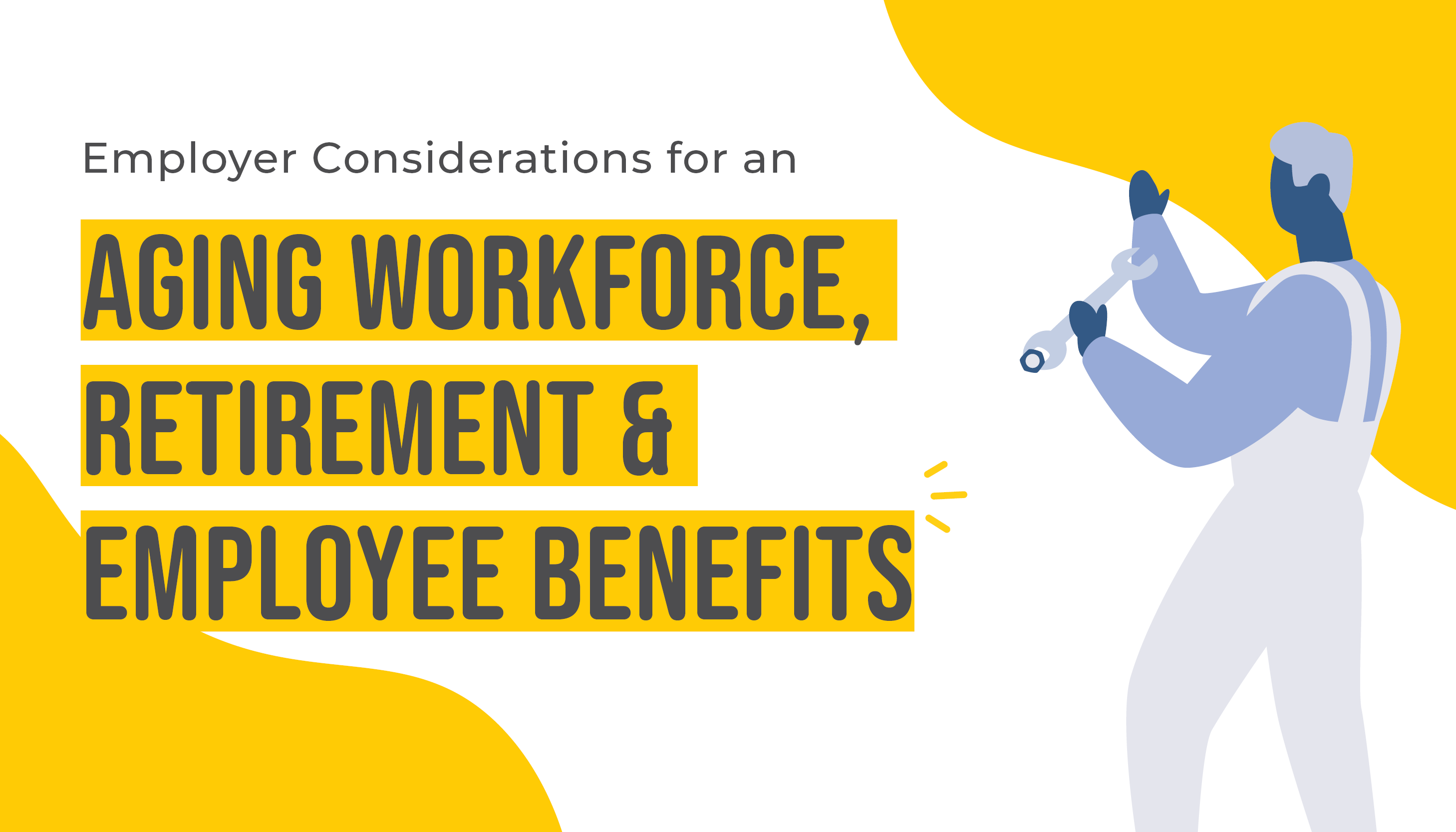6 Employer Considerations for an Aging Workforce, Retirement, & Employee Benefits
By: Benefits by Design | Tuesday September 7, 2021
Updated : Tuesday September 6, 2022
Canada’s workforce is aging as the “Baby Boomer” generation, its largest demographic, reaches the age of retirement. Coupled with the trend of Canadians continuing to work beyond age 65 (not enough savings, cost of living, and COVID-19 being significant factors), and it’s easy to see that much of Canada’s workforce is still made up of older workers.
That’s an important consideration for employers with employee benefits plans, which may undergo some changes as employees age. There’s a few things that employers, Plan Administrators, and affected employees in the workforce all need to know.
Let’s take a look at the major considerations employers need to be aware of and communicating to affected employees.
#1. Benefit Decreases and Coverage Terminations
As employees reach certain ages, their employee benefits may undergo some changes in coverage. This can include decreases in coverage and payouts, and even termination.
Here’s a glimpse at what coverages may be affected when an employee reaches certain ages:
- Age 65 — Life Insurance and Accidental Death and Dismemberment (AD&D) Insurance payouts will be reduced and may be accompanied by reduced maximums. Long Term Disability (LTD) Insurance will also terminate.
- Age 70 — Life and AD&D Insurance payouts are reduced further. Depending on plan structure, other coverages may terminate at this time as well.
- Age 75 — Other benefits, including Extended Health Care (EHC) and Dental Insurance, will terminate. Coverage can be maintained through an extension of benefits or benefits conversion (more on that below).
Continuation of Benefits for Leaves of Absence, Layoffs, and Retirees
These may vary by Insurer, but generally speaking, benefits will be reduced as employees reach certain age milestones.
#2. Offering Benefits Conversion Options
Whenever an employee covered under a group insurance plan loses their coverage, they must be offered conversion options to maintain their coverage on an individual basis. Retirement is a very common time in which employees choose to leave a company, and thus, is a common time in which conversion options are discussed.
If employees choose to continue working past retirement, they remain on the employee benefits plan (with the coverage changes mentioned above) until they leave the company. At which time, conversion options must then be offered.
Benefits Conversion: Maintaining Coverage When Leaving a Job
#3. Canada Pension Plan (CPP) Benefits May Begin
When an employee reaches age 60, they become eligible for the Canada Pension Plan (CPP). This can provide some additional funds and flexibility for them, and they may wish to augment their coverage. At the same time, depending on their province of residence, they may gain access to other government benefits, such as an improved provincial health plan.
Why You Should Offer a Group Retirement Solution (GRS) in Your Employee Benefits Plan
#4. Provincial Health Care Plan
Many provincial health care plans may have increased coverage as employees age, such as prescriptions and vision care. This allows them to rely more on provincial coverage, and less on their employee benefits. This may open up opportunities for older employees to rethink how they utilize their plan and services. These coverages may vary by province, and employees and employers are encouraged to confirm their province’s coverage.
As an example, the Ontario Drug Benefit (ODB), begins when an Ontarian turns 65 years of age, and offers coverage for more than 5,000 prescription drug products.
Likewise, increases in provincial coverage at age 65 may be an opportunity for employers to augment their own employee benefits plans to continue to support those employees while also optimizing their employee benefits plan.
#5. Augmenting or Diversifying Your Benefits Options
Alternative options exist for employers to implement coverages that employees can use, such as a Health Care Spending Account (HCSA). This allows them flexibility and choice in how they spend their benefits dollars and allows them to prioritize their coverage.
Likewise, individual health and dental options like Health Assist can provide these employees with another layer of choice in how they cover their health and dental expenses.
#6. Communicating it All
As you can see, there’s a lot of considerations for Plan Administrators, Advisors, and employees regarding age and benefits.
Offering conversion benefits, for example, is a requirement of an employer and Plan Administrator, and not doing so could leave you liable. In addition to that, communicating the other considerations — like benefits decreases, or the increased coverage of a provincial plan — can help you and your employees make informed decisions about their health.
If employees within your workforce are approaching any of these milestones, ensure that you’re actively engaging with them about their options for best results.


